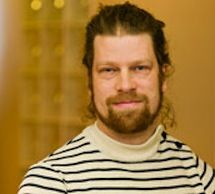Japanese acupuncture refers to several acupuncture styles which have been developed or cultivated in Japan over the last 1000 years. In general, it relies heavily on palpation, because for many hundreds of years, shiatsu (traditional Japanese massage) and acupuncture were some of the only avenues of employment for the blind. As such, its distinctive style utilizes careful palpation of the abdomen and other muscle structures to diagnose and guide treatment.
This method allows both the patient and the practitioner to monitor the progress of each treatment right away. When a correct set of acupuncture points is chosen, the patient feels a change in the palpated structures immediately.
Treatment is usually divided into two different steps : “root” and “branch” treatment methods. A root treatment seeks to address core energetic and structural imbalances, while a branch, or local treatment addresses the symptomatic complaints of the patient.
The ‘Root & Branch’ method addresses the patient’s health issues from several levels. By looking more deeply into the structural and or constitutional imbalances, which often underlie a patient’s symptomatic complaints, I am able to assist in a more complete and lasting healing. It is precisely this holistic approach which gives me the ability to help patients with the most complex issues. Often by seeing the patient’s problem from a broader perspective, even the most difficult cases can be solved.
Japanese acupuncture offers a totally new way to look at patients. It combines classical Chinese medical principles with modern (western) idea of pathophysiology in a way that facilitates the understanding of each and brings out the best in both.
Japanese acupuncture generally involves thinner or smaller needles and employs shallower insertions than Chinese acupuncture. Consequently, most patients find that treatments are relaxing and revitalising. Often, they are not even aware that needles have been inserted.
Treatment is usually divided into two different steps : “root” and “local” treatment methods. Root treatment seeks to address core energetic and structural imbalances, while Local treatment addresses the symptomatic complaints of the patient. For many problems, local treatment is enough.
In order to resolve complex or long-standing conditions and treat the underlying cause of complaints, both local and root treatments are performed at the same time. Once the imbalances have been identified and corrected, the body’s natural energies are activated and it heals itself.
